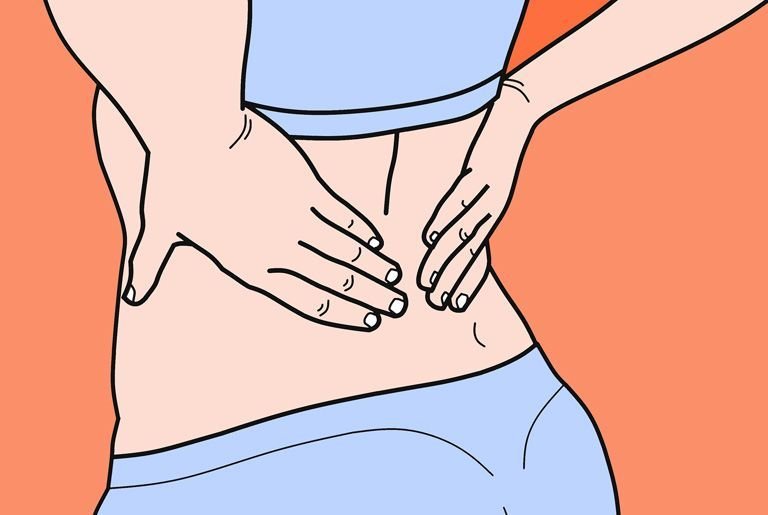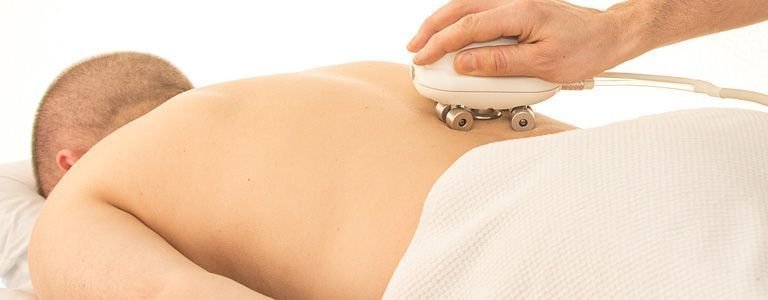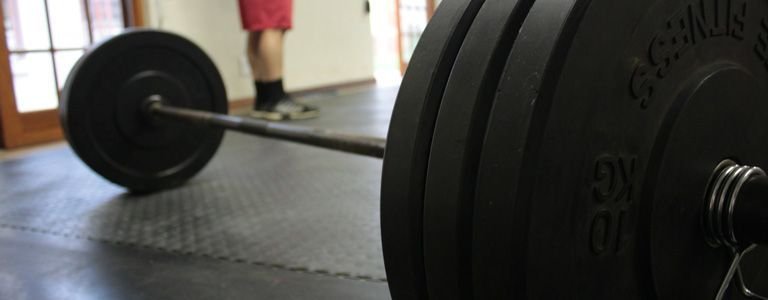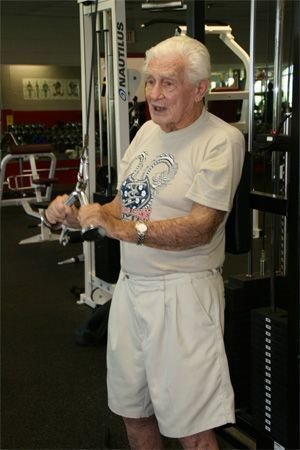Low back pain, knee pain, hips pain as well as in other parts is more common, and this is because of the sedentary lifestyle that silently and slowly kills us and makes our body barely moving, non-functional.
The body comes to the conclusion that it doesn't need the muscles because we do not use them, the muscles are reduced, the pressure on the joints is bigger, the pain comes and suddenly we are on a physical therapy and taking pain killers to survive the day.

Is this familiar to you?
Going to a physical therapy
Pain rehab and injury is today reduced to, in general terms, physical therapy, which involves the use of physical agens such as lasers, ultrasounds and the like 'exercises' on the therapy table which, for the past centuries, have been performed by the elderly woman with arthritis young athletes of all diagnosis.

| After therapy, the person usually returns to the sedentary life.
The goal of such therapy, of course, is to restore the patient to a normal, healthy state. After such treatments, the patient, a person, usually returns to his usual sedentary lifestyle, rarely when dealing with any kind of physical activity that is, among other things, contraindicated because there is a tendency to have painful hips, sore knees, painful back, painful neck spine.
Lifting weights as a prevention?
Pain and injury prevention is also the case at many clinics, but also at many personal trainers trough weight training, which is truly great, but the flaw of such training, no matter what the weight work is that it is not strength training.
| Basic exercises with a suitable load.
Strength work requires basic exercise work with a suitable load, and here we are talking about the work of a large number of repetitions with little pounds, which is absolutely inadequate to make any structural changes to the weak and 'fragile' tissues.
Adequate exercise intensity would be one that is enough to stimulate adaptation, and insufficient to risk injury.
Strength training is the solution
Strength training, weight training is the only method of building muscle and strength. Training strength is superior to any other type of training because with this training structural adaptation of muscles is possible for bone and connective tissue. Resistance, elasticity and tissue adaptation is created, and in order to stimulate tissue adaptation and injury resistance, we need a load.
The most effective way to train is to use as much muscle mass as possible in the full range of movement with the highest weight we can undergo for this number of repetitions.

| External load put stress on the muscles.
Powerful muscles become stable and mobile, achieve balance and function and build strength and stability around the most vulnerable areas of our body.
Muscle growth is a stress response
Every muscle work is stress or stress response. Stress sends the muscle pulse to grow. When the muscle grows, it creates stress on the bone to which it binds. Stress then sends impulse bones to strengthen because they are in a situation they must be able to bear.
In the same way stress on tendons, ligaments and other hinged structures is created, which in the same way respond to stress-boosting, increasing density, mineralization ... Thus, stronger tissue and resistance to the body are created.
What do you think about a disease like osteoporosis? Imagine how much benefit would be the strength training for people with osteoporosis!
We need to adress the source of the problem
An example is taking medications to suppress the cold. All right, the flu will disappear, the symptoms will really go away, but why did the cold come in the first place? Certainly not because we didn't take medications.
| The body is connected.
So with the injuries - did the pain come here, well, by itself? No it didn't. The body is a connected entity, therefore, a wider picture needs to be taken into account, which will give us insight into the patient's condition, his life habits, and the very fact that why the imbalance is here in the first place.
What was first, a chicken or an egg? In this case it is a chicken, and the egg is a product of a chicken.
Strength training when painful?
Stereotypical thinking is that contraindicated power training in painful situations is simply meaningless. Because of this presentation of strength training, people are tending to give light, 'safe' exercises during which there is virtually no movement in the joint, just a minor contractions in the muscle.
Of course, rarely in any context, muscle testing, the discernment of active inactive muscles, the cause of dysbalance, but the therapy is closely related to the strengthening of all the surface muscles at an equal dosage regardless of the diagnosis.
Let's look back on the word we mentioned before - strengthening.
Strengthening of the muscles
Muscles and bones react to stress, and whether we want to build muscle strength, strength, endurance or flexibility is a dependent variable in terms of stress dosage. As noted above, a high number of repetitions with smaller weights does not make the necessary structural changes in our body to develop the stability of the compressed areas!
| We need to lift heavy weights.
However, people tend to avoid strength training as long as they are not in pain or when they are advised by a doctor or someone similar to them. But if strenth training was an integral part of an individual's life from the very beginning, the body would be ready and resistant to almost all challenges and stresses.
So then we go back and work on it when it's almost late. (We say 'almost' because the injury can never be avoided, but by strengthening your muscles you can definitely reduce the predisposition for it).
What about older people?
Older people are more vulnerable to injuries than the young, and one of the reasons is the progressive reduction in muscle mass and bone density with mature years and also the reduction of hormones responsible for muscle growth and maintenance.
| Muscle mass reduce with aging.

We all already know that constant and progressive load is needed to maintain muscle and bone mass, but adults, to a large extent, feel that training is a hobby for youth and they just do not see themselves there.
But with reduced muscle mass, general dysfunction and weakness of the body, people are becoming increasingly vulnerable to injuries, for example, lifting bags out of the floor store, or a two-year-old grandchild. General cardio conditioning for the elderly helps greatly, helps with the health of the bloodstream, but it lacks strength training for the logical reasons we have already mentioned.
Natural movements from everyday life
Basic exercises such as squats, pushups or deadlift are general functional movements that are used in everyday life. Raising objects from the floor, raising or sitting on a chair, pushing things out of themselves, switching furniture are just some of the examples where variations of this movements are used.
| Basic movements are the key.
So why not make the best version of ourselves by doing basic functional movements in order to better prepare for the situations in everyday life?
Weight training is a safe, dosed and controlled way of achieving this goal. The precision of deciding how to practice a particular muscle group allows us to avoid moves that annoy us or create discomfort, and learning the right technique reduces the risk for an injury.
There is no dangerous exercise.
There is bad technique.
There is bad knowledge.
Just that.
Intervertebral disc herniate because of bad techniques and lifelong repetition of the wrong movement, not because of 'bad' exercises like a dead lift. Discs herinate when someone is trying to lift a couch with a rounded back. Here, therefore, trainers and physiotherapists are the ones who should be educated to teach the patient or client the correct technique.
The final step in rehabilitation
Strength training is a step in progressive injury rehabilitation. Rehabilitation begins with the initiation of the affected and painful area, then work on the extent of the joint movement.
| Strength training is being avoided.
Below are endurance exercises that are performed in a number of repetitions with smaller weights, and the final step, strength, unfortunately many forget or identify with the previous stage thinking that the strength is achieved with sand weights on the ankles or wrists Or by compressing the muscles while lying on the therapy table. Or electrotherapy.
Why cardio exercises are short term?
On the other hand, many will wonder why cardio-respiratory endurance exercises do not have the same effect on the preservation and health of joints, bones and muscles such as strength training? In addition to the apparent reason visible from the very name of that type of training, muscles and bones do not gain strength.
| Repetitive actions potentially lead to injuries.
Although individuals who have never met any physical exercise can benefit profoundly from cardio exercises and low-intensity exercises, it does not have the effect in the long run. Any physical activity initially promotes hypertrophy (growth) of the muscles and strengthening of the bones, but for the further process it is necessary to progressively increase the load possible only by training the strength.
| Beginners will profit but short-term.
Cardio training is made of repetitive actions, and they are, by themselves, predisposed to injury. For example, injuries such as the orotibial syndrome, the trunk, the jumbo knee or the plantar fasciitis product are exclusively consecutive of the same repetitive actions but also the weak muscles around the hips.
Hormones and strength training
Apart from the listed benefits of the locomotion machine base, it is no less important to note that strength training stimulates numerous adaptive and homeostatic mechanisms.
Recognition of hormones such as growth hormone and testosterone, including cortisol and serotonin, increase insulin sensitivity are some of the most important and possibly only deserving mechanisms for achieving any progress in training as well as in life.
Testosterone
Testosterone enhancement promotes protein synthesis leading to higher muscle mass and thus less fat deposits. Increasing bone density and producing red blood cells leads to more oxygen in the body, and these are also the wonderful side effects we want to gain strength training.
Reducing depression and impotence can also be thanked to the testosterone we produce while lifting heavy loads.
Cortisol
Cortisol, on the other hand, although stress hormone, breaks our fat deposits and has anti-inflammatory properties that is highly desirable during training and everyday life, as it protects our tendons and muscles.
Growth hormone can be thanked for improved mental health, immune system, fat loss and general growth.
Diabetes, polycystic ovaries, menstrual cycle disorders, reduced libido, metabolic syndrome ... are just some of the conditions that can be controlled, that is, disappear through the strength training that is deserving of stimulating hormone work properly!
What have we learned today?
Strength training is indeed a health imperative. People are created to move, raise, push, pull, work!
We were not created to sit in the office for eight hours and then five on the couch.
Move your body and it will be grateful to you!
Start now!
Done
cool one
Gd
done
thanks, good info :)
upvote my cmnt
Done
good
Hlpful
Follow and vote
Osm